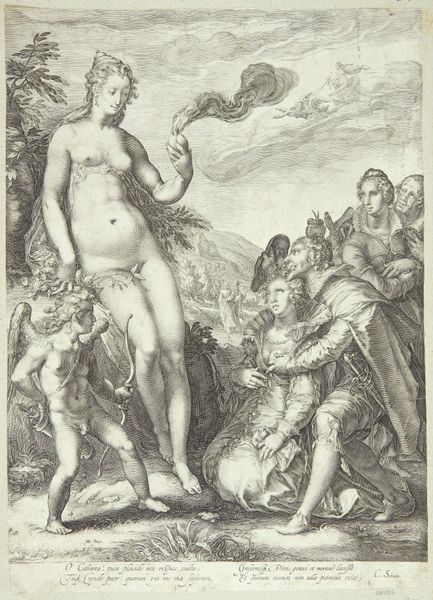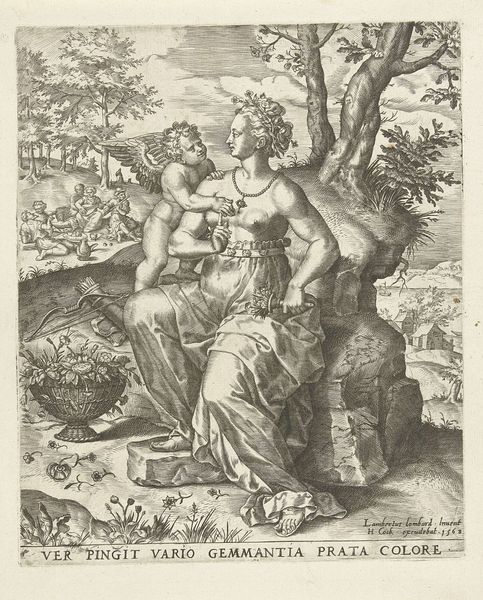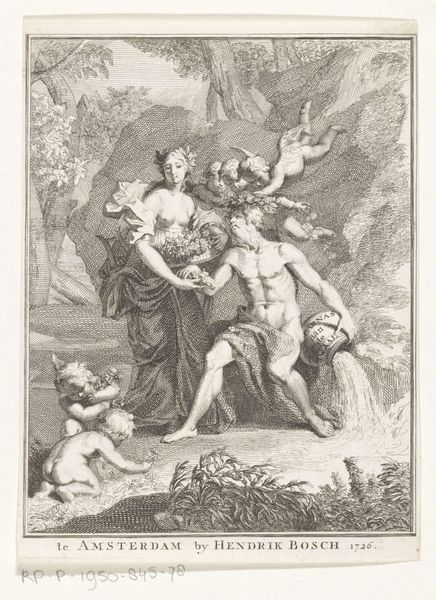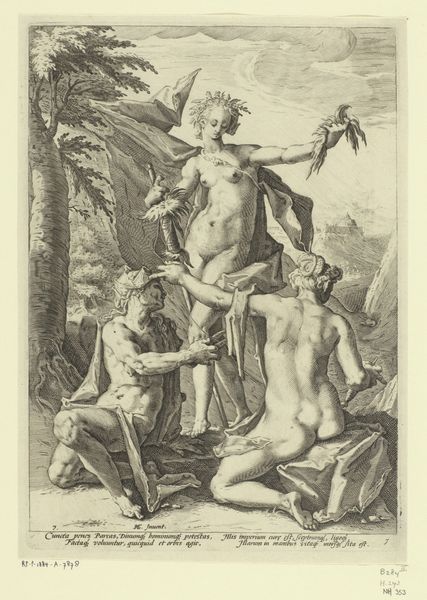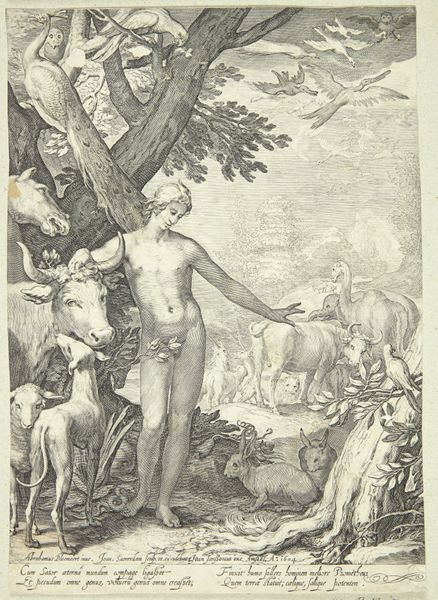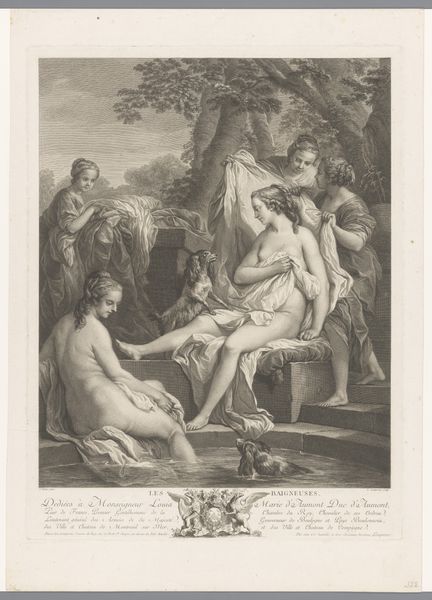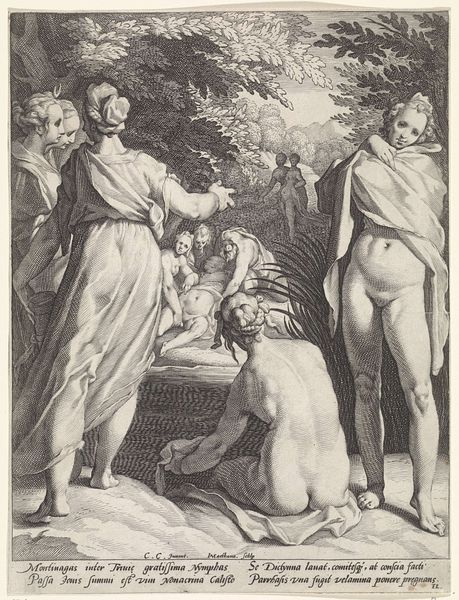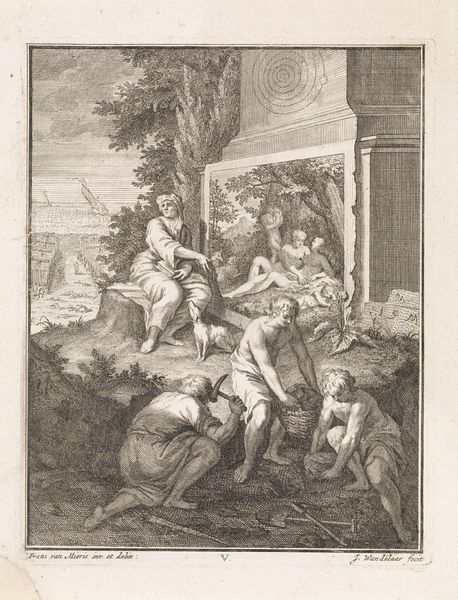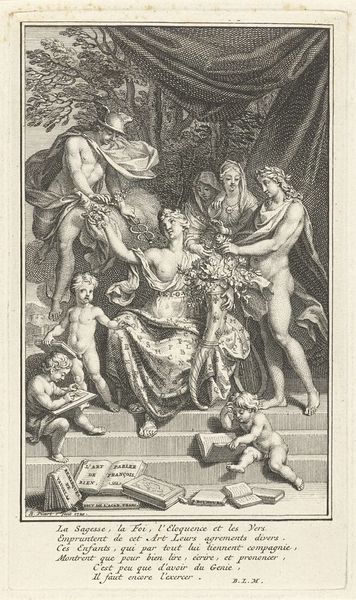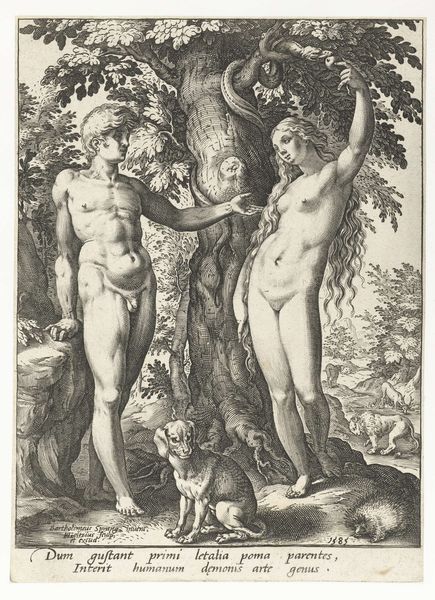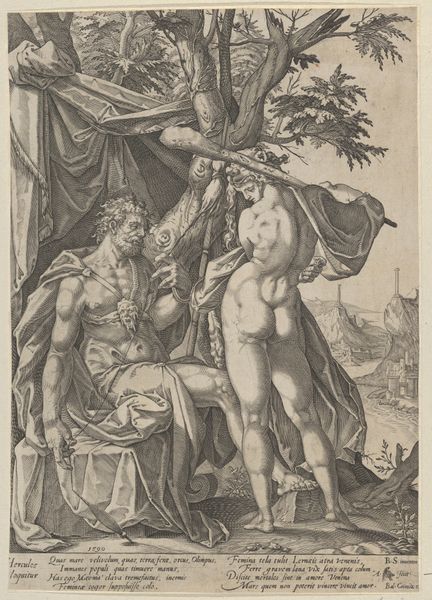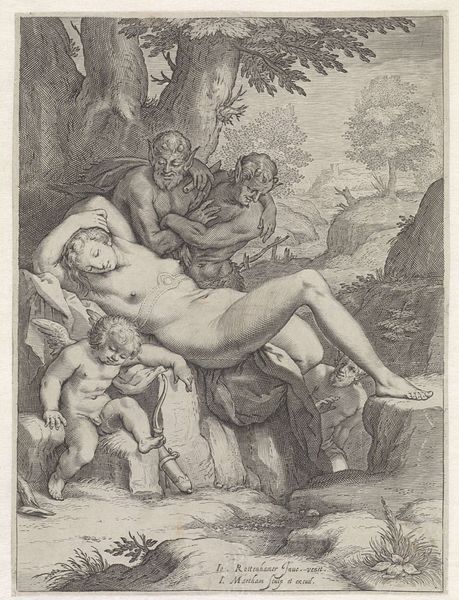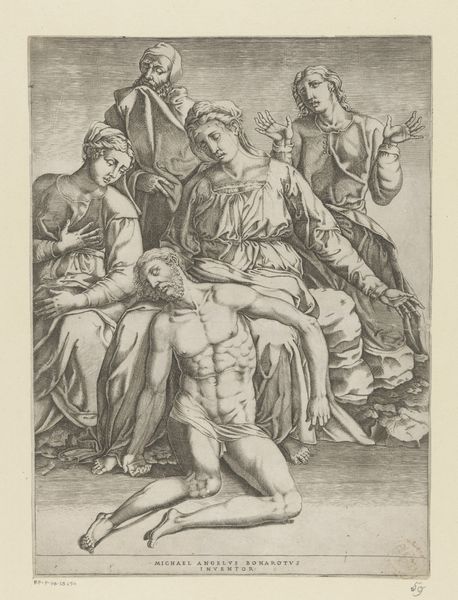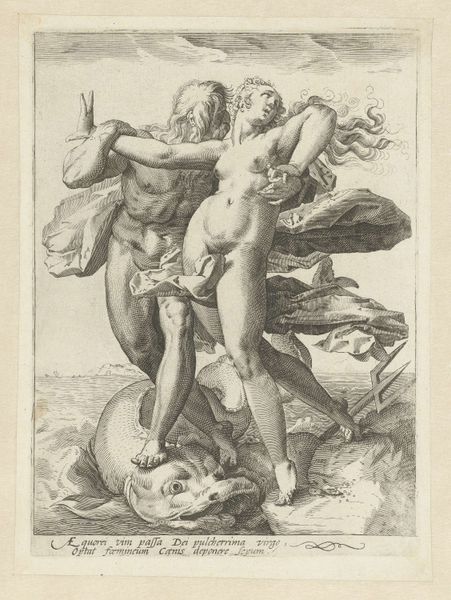
print, engraving
#
allegory
# print
#
mannerism
#
figuration
#
northern-renaissance
#
nude
#
engraving
Dimensions: 254 mm (height) x 178 mm (width) (plademaal)
Editor: This engraving, "Venus," created in 1596 by Jan Saenredam, depicts a complex allegorical scene. What strikes me is the sheer density of figures and activity within this single print – a kind of hyper-realized snapshot of Mannerist sensibilities. What stands out to you in this piece? Curator: Considering the social context of printmaking in the late 16th century is essential. This wasn’t fine art in the modern sense; engravings were a reproductive medium, designed for dissemination. This print, then, wasn't about individual genius but about skilled labor – the artisan translating another artist's idea into a commodity. The question is: for whom was this commodity intended, and what needs did it satisfy? Editor: So, less about Saenredam's artistic intention and more about the market that consumed prints like these? Curator: Exactly. Consider the labor involved – the meticulous detail etched into the copper plate, the hours of work needed to produce multiple impressions. It challenges the traditional separation of “high” art from the more ‘common’ or applied arts, doesn't it? Furthermore, look at the overt displays of wealth, power and leisure; not everyone had the disposable income or available leisure to casually peruse and procure an elaborate allegorical engraving in the late 1590s. What level of connoisseurship might such an aesthetic display demand? Editor: That makes a lot of sense. Thinking about the print as a material object changes the whole perspective. Thanks. Curator: Indeed! And examining the work in terms of process, access and production offers some insights that close readings sometimes miss.
Comments
No comments
Be the first to comment and join the conversation on the ultimate creative platform.
